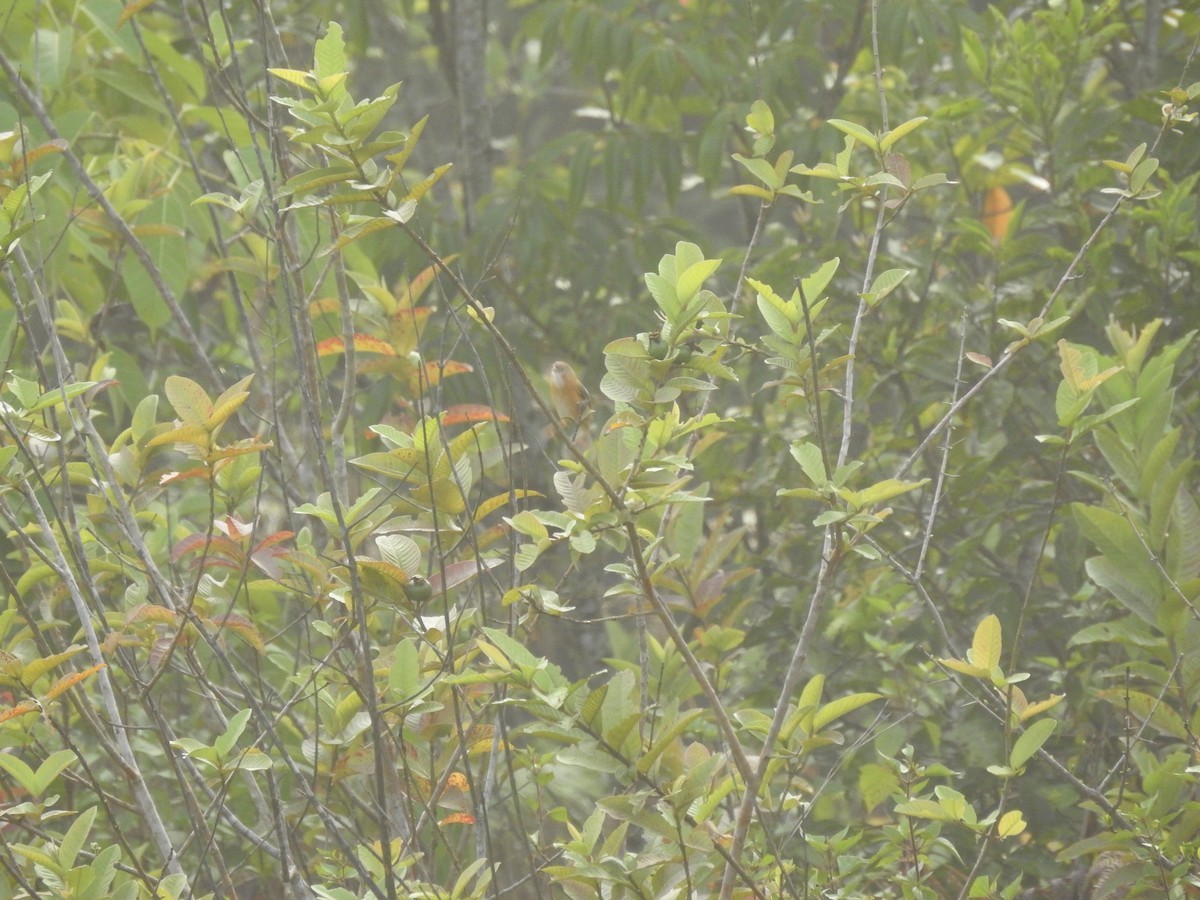Tawny-bellied Babbler
A species of Tawny-bellied Babbler Scientific name : Dumetia hyperythra Genus : Tawny-bellied Babbler
Tawny-bellied Babbler, A species of Tawny-bellied Babbler
Botanical name: Dumetia hyperythra
Genus: Tawny-bellied Babbler
Content
Description General Info
 Photo By Ashwin Viswanathan
Photo By Ashwin Viswanathan Description
The tawny-bellied babbler is a small babbler at 13 cm including its long round-tipped tail. The outer tail feathers are about half the length of the central tail feather. It is dark brown above and orange-buff below, with a rufous grey crown. The feathers on the forehead are stiff and the tail has cross rays and is otherwise olive brown. The throat is white in adults of the populations of peninsular India and Sri Lanka. The Sri Lankan population however has a larger and heavier beak and paler underparts. The population in Mt. Abu is white throated and chestnut feathers on the crown (appearing capped, as opposed to the chestnut being only on the forehead) with pale shafts. It has been proposed as a subspecies abuensis but is more often included in albogularis. Another variant form first described from Khandala Ghats as navarroi is also usually included within the range of albogularis. 
Size
13 cm
Nest Placement
Shrub
Feeding Habits
Tawny-bellied Babbler primarily consume insects, such as larvae and minute beetles, along with nectar from coral trees and Salmalia. They forage in loose flocks, moving through grass and feeding on the ground amidst dead leaves.
Habitat
The tawny-bellied Babbler's habitat encompasses a variety of environments ranging from open wooded regions and grasslands interspersed with shrubs to bamboo thickets and thorn-scrub. It is also found in wastelands adjacent to forests, as well as deciduous and mixed-deciduous scrub-jungle. This species typically avoids purely evergreen forests and sometimes establishes breeding grounds in residential areas.
Dite type
Insectivorous
General Info
Feeding Habits
Bird food type
Behavior
The babbler builds its nest in a low bush, concealed in dense masses of foliage. The nest is a ball of long woven leaves of bamboo or grasses. They breed from May to September mostly during the rains. The normal clutch is three or four eggs. Both parents incubate the eggs. In Sri Lanka they are thought to raise more than one brood. Like most babblers, it is not migratory, and has short rounded wings and a weak flight. A prenuptial moult takes places in January-February in the southern population. It feeds mainly on insects but also takes nectar from flowers of Bombax and Erythrina. They produce cheeping, twittering or harsh chattering notes while foraging in bushes. The name Pandi Jitta, literally "pig bird" in Telugu, refers to its habit of foraging under dense shrubbery in the manner of pigs. Banded bay cuckoos have been known to lay their eggs in the nests of tawny-bellied babblers. Unidentified haematozoa placed in the genus Leucocytozoon have been recorded from the blood of the species. A specimen that died in captivity was found to have microfilariae in addition to haematozoa. 
Distribution Area
The babbler is found from north-central India to Sri Lanka. The populations in India are all intergrading and no disjunct distributions exist. Its natural habitat is scrub and tall grassland. In Sri Lanka it is found in the hills up to about 1500 m above sea level. 

 Photo By Ashwin Viswanathan
Photo By Ashwin Viswanathan Scientific Classification
Phylum
Chordates Class
Birds Order
Perching birds Family
Old world babblers Genus
Tawny-bellied Babbler Species
Tawny-bellied Babbler